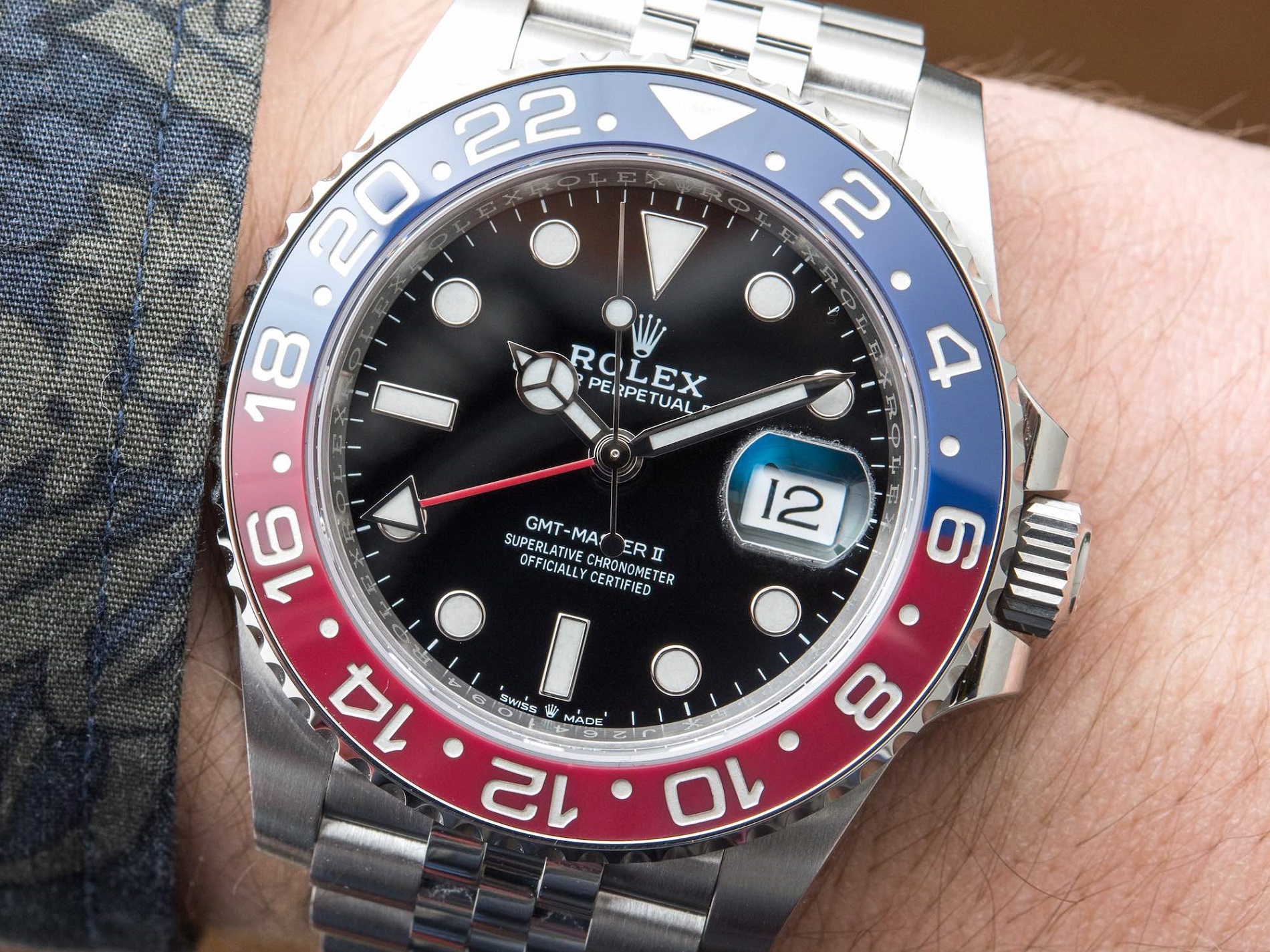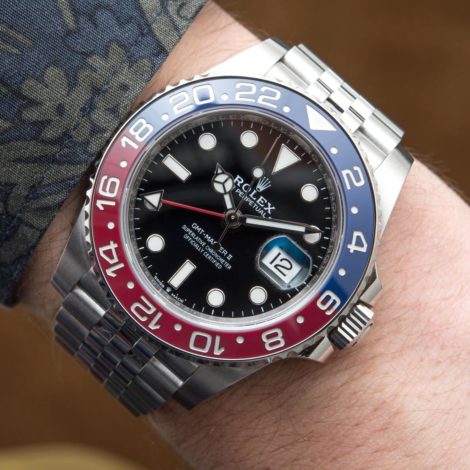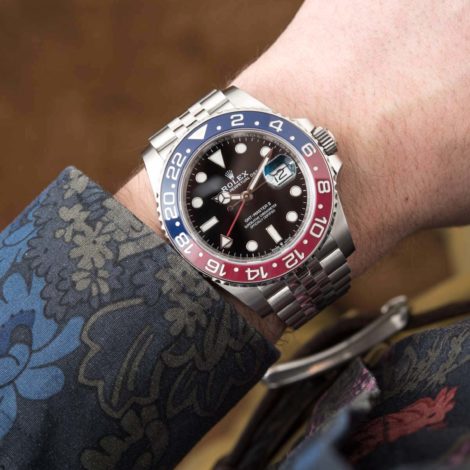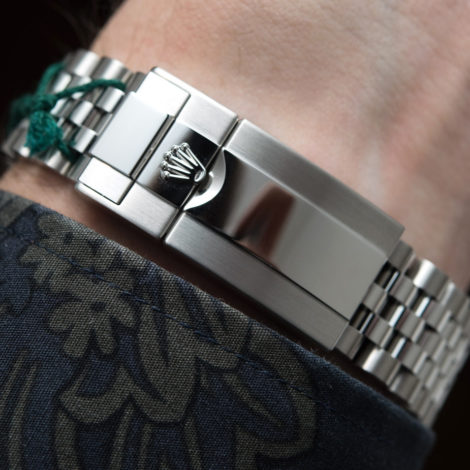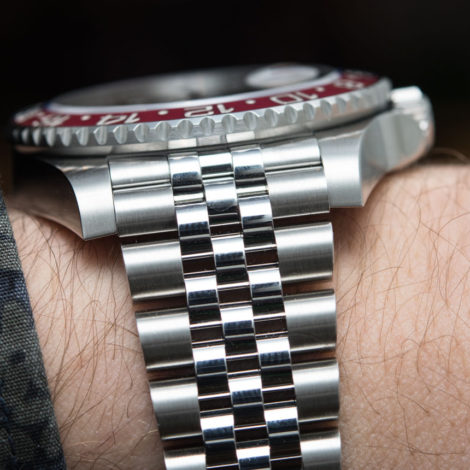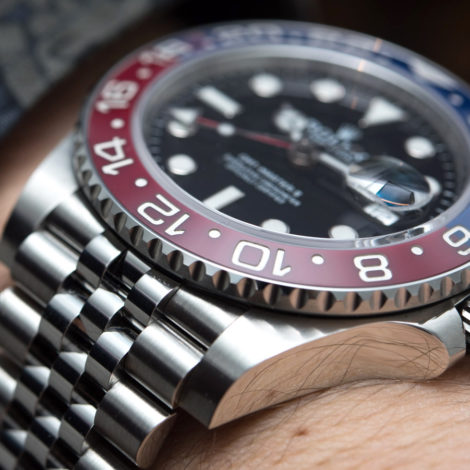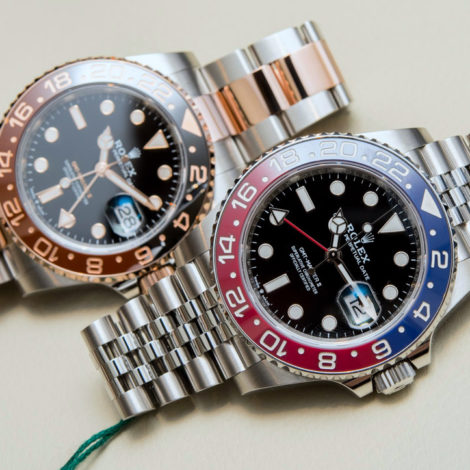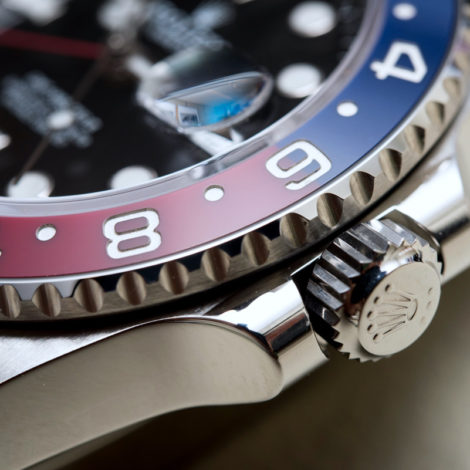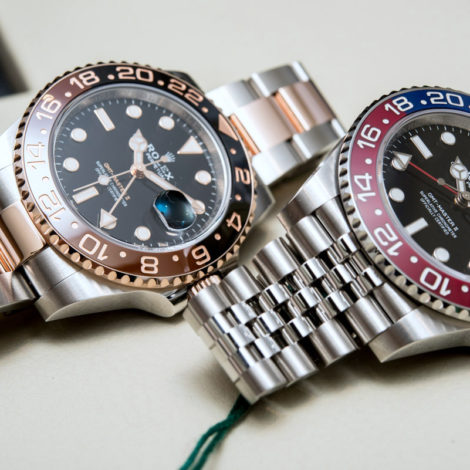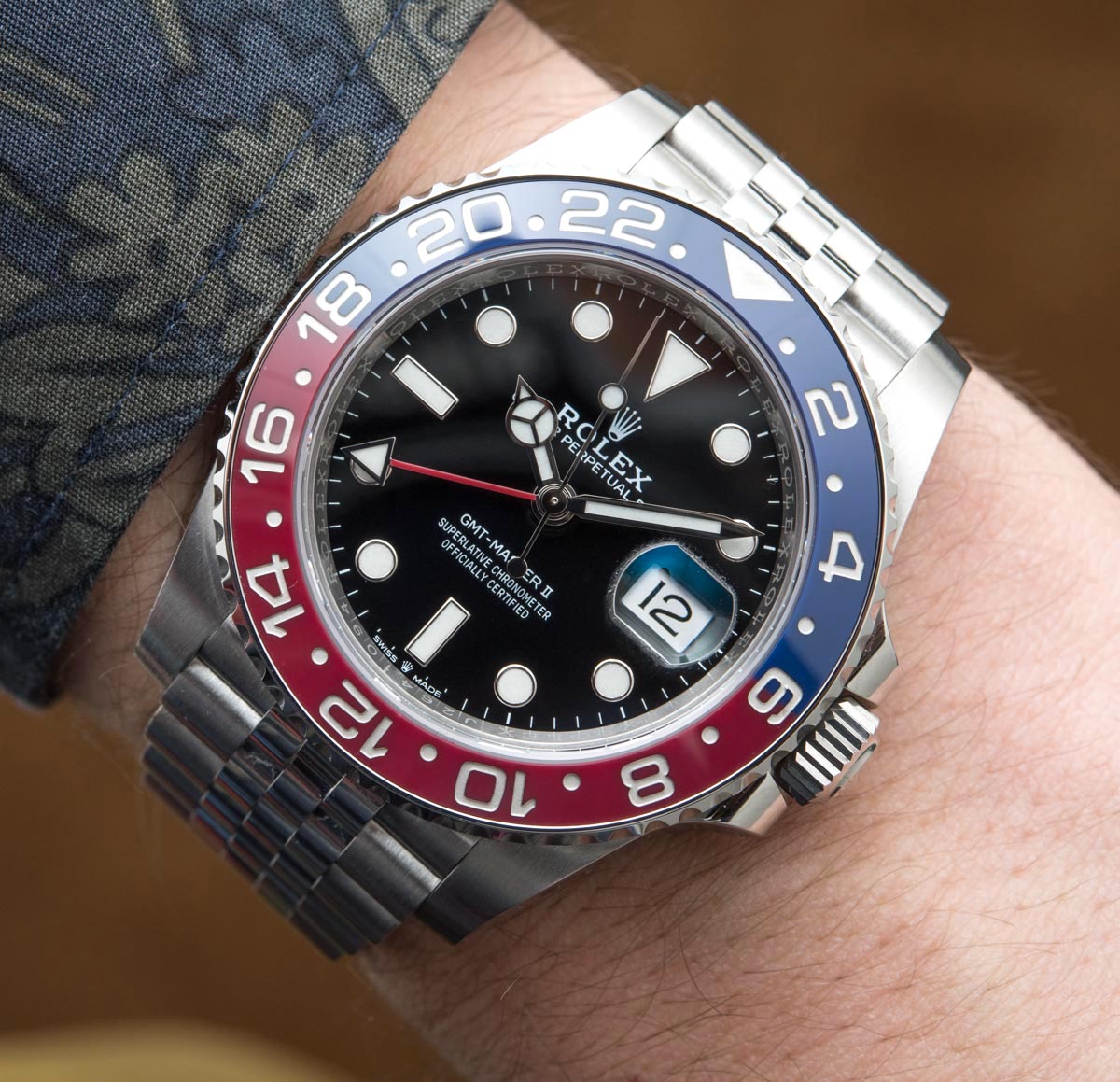
Earlier today was the 2018 opening of the watch industry trade show Baselworld, and everyone was talking about the new reference 126710BLRO Rolex GMT-Master II “Pepsi bezel” that was (finally) released in steel. This fact was important to watch lovers because the only modern-era Pepsi bezel Rolex indeed had a fancy two-tone red and blue ceramic bezel… but only came in 18k white gold. Rolex even celebrated the white gold GMT-Master II “Pepsi bezel” by also offering a new dial for it in 2018. With that said, the much more accessibly priced GMT-Master II 126710BLRO comes with the high-appeal of a steel Rolex sport watch.
Not just any steel but “Oystersteel.” Rolex continues to use the 904L steel alloy, but because they have a particular 904L alloy blended just for them, from 2018 onward Rolex will simply say that their steel watches use Oystersteel. The GMT-Master II watch has been thoroughly redesigned for 2018 even though it appears similar to the outgoing model. We are talking new case, movement, and bracelet.
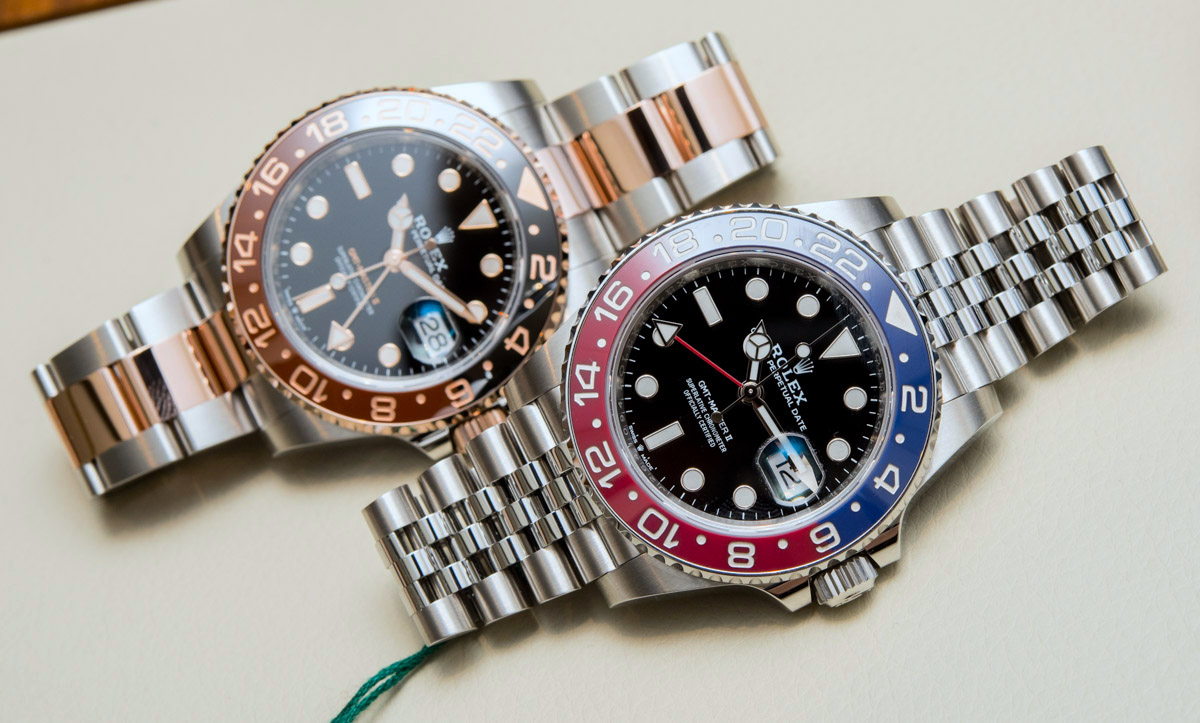
Rolex began their newest generation of high-performance in-house made movements inside the Day-Date 40 watch, as well as the use of their latest generation of watch case production techniques. The new cases are very well finished and do indeed make for a slightly better experience than the outgoing generation of GMT-Master II watches. That also means the popular “Batman” black and blue bezel Rolex GMT-Master II 116710BLNR
is now very likely to soon be discontinued (or perhaps updated) even though Rolex claims it will live side-by-side with the new 126710 GMT-Master II models.
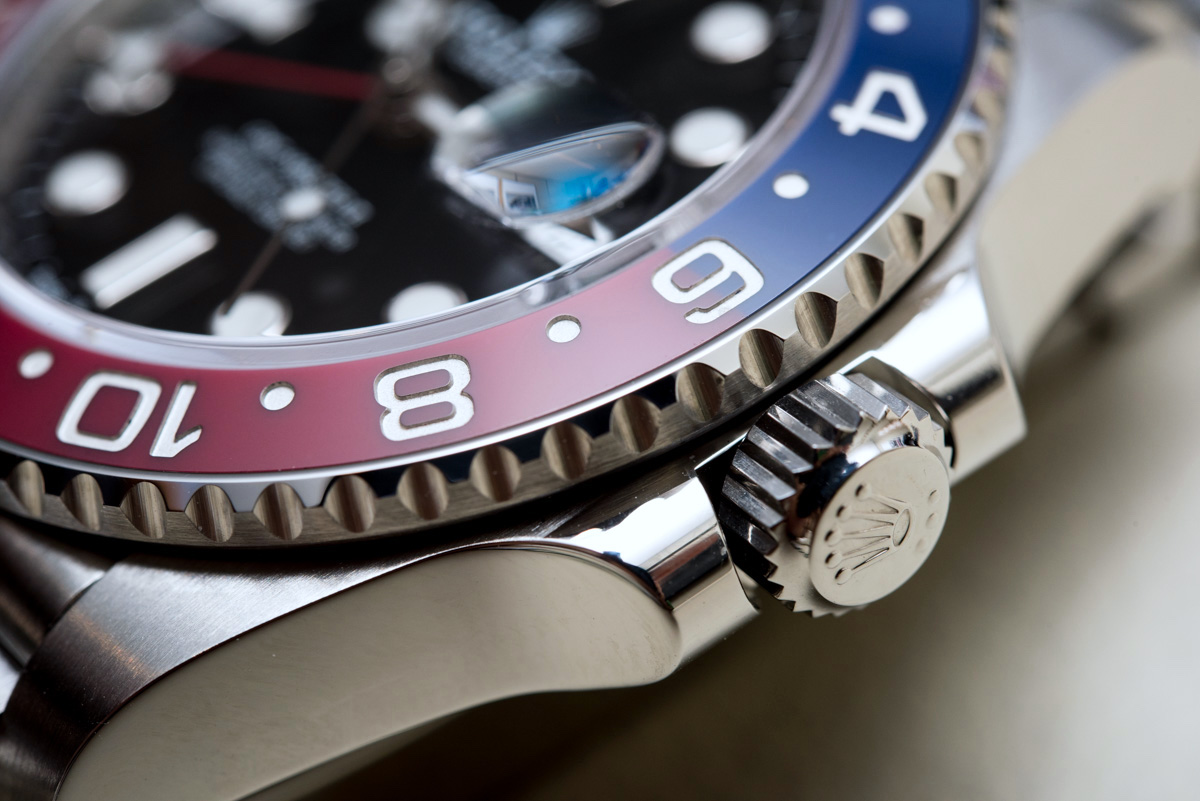
Rolex watch fans nicknamed the red and blue bezel GMT-Master the “Pepsi bezel” given the color similarities with the Pepsi soft drink logo. Rolex actually introduced the two-tone bezel when originally releasing the GMT-Master back in 1954 when they produced it in collaboration with Pan Am airline pilots. The purpose of the two colors on the rotating bezel on a 24-hour GMT watch is to designate day and night hours for the second timezone. Since then, Rolex has experimented with a variety of single and two-tone bezels on GMT-Master watches. The most recent was the blue and black bezel on the steel 116710BLNR. Why didn’t they go straight to a red and blue bezel to begin with?
Rolex claimed that the complex production technique used to produce not only red, but red and blue mixed “Cerachrom” ceramic was why the red and blue bezels for the 18k white gold GMT-Master II 116719BLRO were produced in a small quantity for the expensive gold models. After a few years Rolex seems to have perfected the technique, which explains their desire/confidence to put ceramic “Pepsi” bezels on steel models. The implication to Rolex collectors is more profound because these are consumers who want steel Rolex sport watches more than gold ones, and because the “character” and historic appeal of a red and blue bezel GMT-Master is hard to pass-up. Recall that until Rolex debuted two-tone Cerachrom ceramic bezels, all of its two-tone bezel colors (including past generation “Pepsi” bezel watches) were produced from aluminum. Compared to aluminum, ceramic is vastly more scratch-resistant and the color will not fade over time.
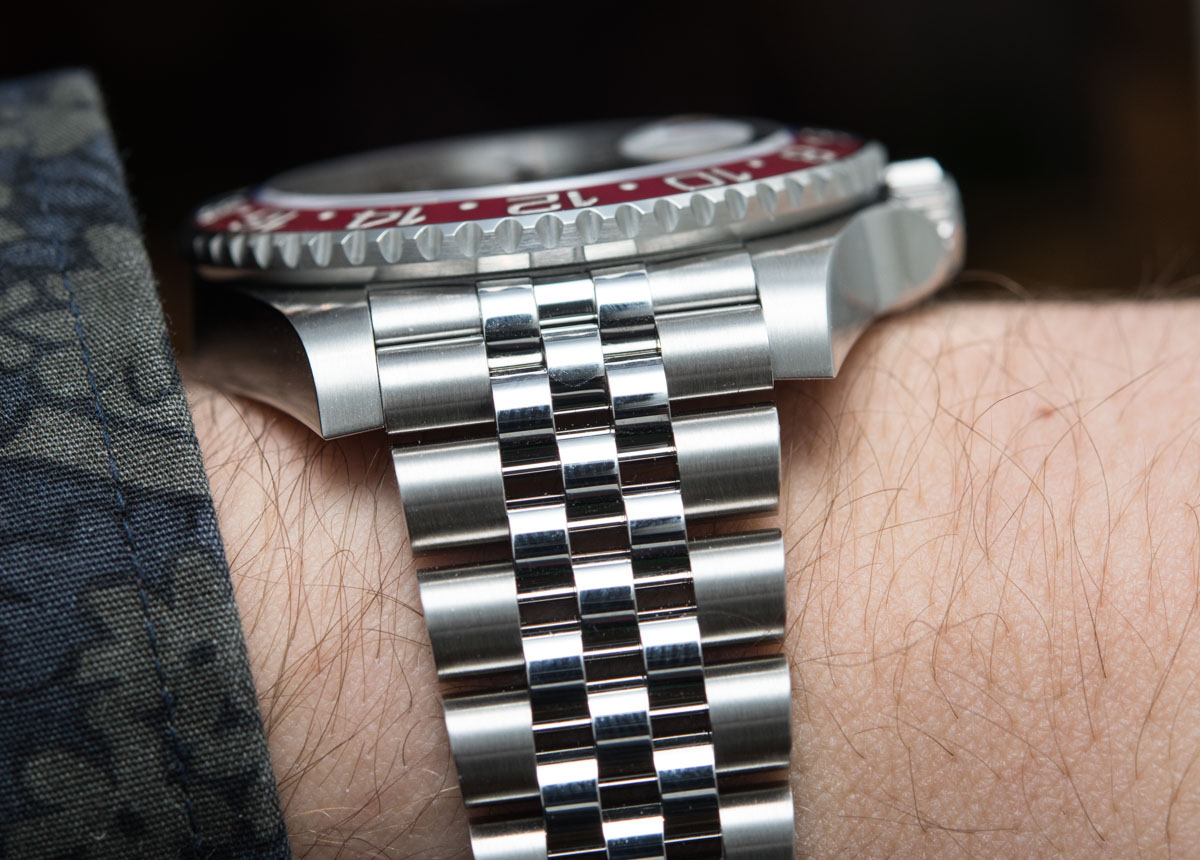
Rolex also took the GMT-Master II 126710BLRO launch as an opportunity to reintroduce the jubilee-style bracelet back into their sport watch collection. Recently offered for the Rolex Datejust 41 models in steel and gold, the GMT-Master II 126710BLRO’s jubilee bracelet is in all-steel and comes with a matching Oysterlock folding deployant clasp. This isn’t the first time a GMT-Master II watch has been available on such a bracelet – but it is the first time among the modern era of Rolex sport watches.
If the new case and bracelet for the GMT-Master II wasn’t enough for watch fans, Rolex also introduced a new GMT movement with the Rolex caliber 3285. This is one of Rolex’s new “Superlative Chronometer” rated watches, which in addition to passing Rolex’s in-house certification standards, also promises plus or minus 2 seconds per day accuracy as well as a five year warranty period. The automatic movement operates at 4Hz (28,800bph) and offers 70 hours of power reserve. Additional features include Rolex’s anti-magnetic Parachrom hairspring and their Chronergy balance wheel. Operating the 3285 automatic movement is a pleasure and certainly an upgrade on the previous generation GMT-Master II’s movement. Being able to independently move the main hour hand during travel is among the important features Rolex wants people to know about.
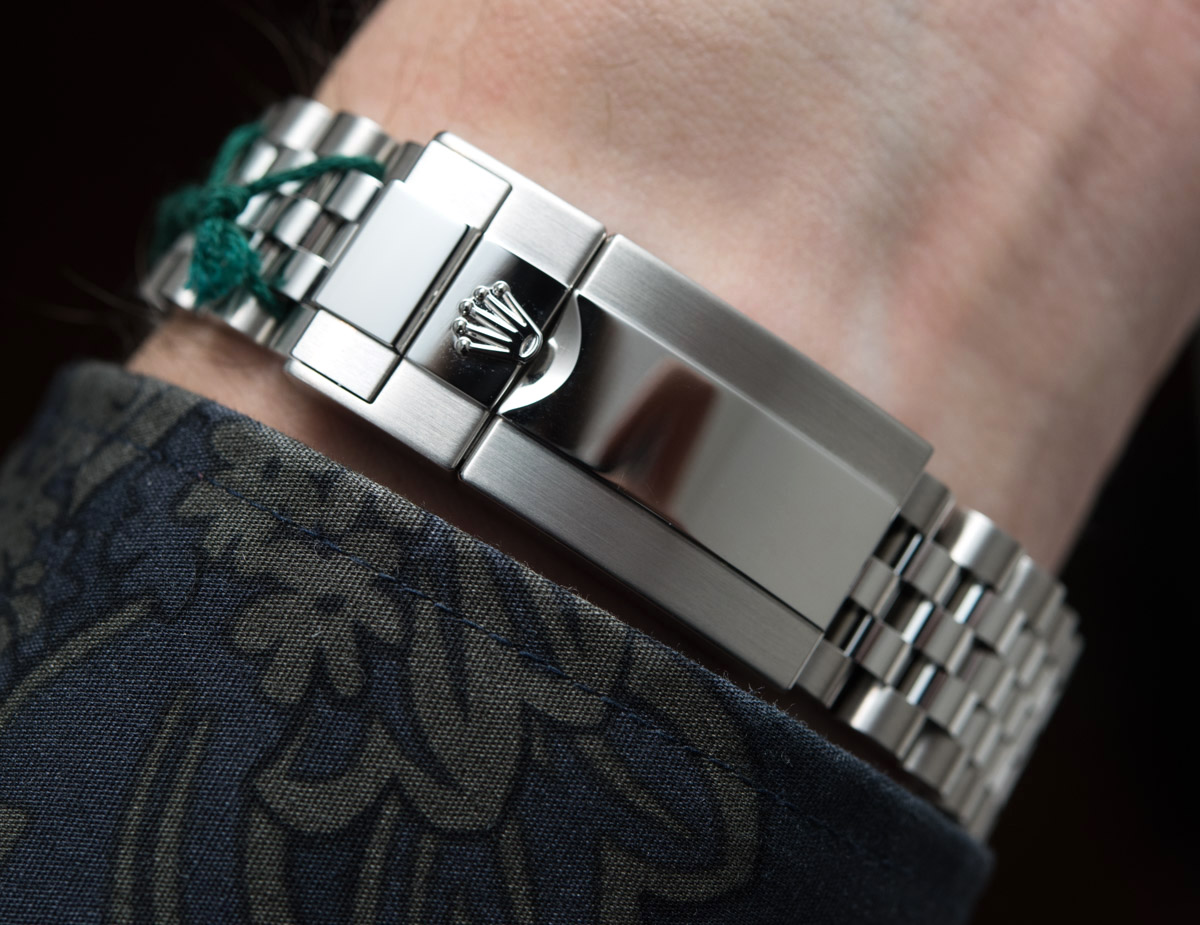
It is possible that Rolex included some dial changes for this new generation GMT-Master II family of watches, but they are subtle at best. Rolex did what they do best and that is offer something new which looks like something that has existed in the collection for a long time. This brings up the important question of “who wisest to get the new GMT-Master II ceramic ‘Pepsi bezel’ watch?” That is a good question. Rolex obviously doesn’t want to reduce the value of their existing product catalog so they themselves will not likely call the 126710 GMT-Master II as “better” than the 116710 models. If you just purchased a Rolex GMT-Master II and feel you want to upgrade, then the good news is that you’ll likely get a decent price for your pre-owned model. The harder part (these days) will be getting any of the new GMT-Master II watches in a retail environment, since Rolex is typically keen to ensure that at first the demand for its new steel sport watches outpaces actual supply.
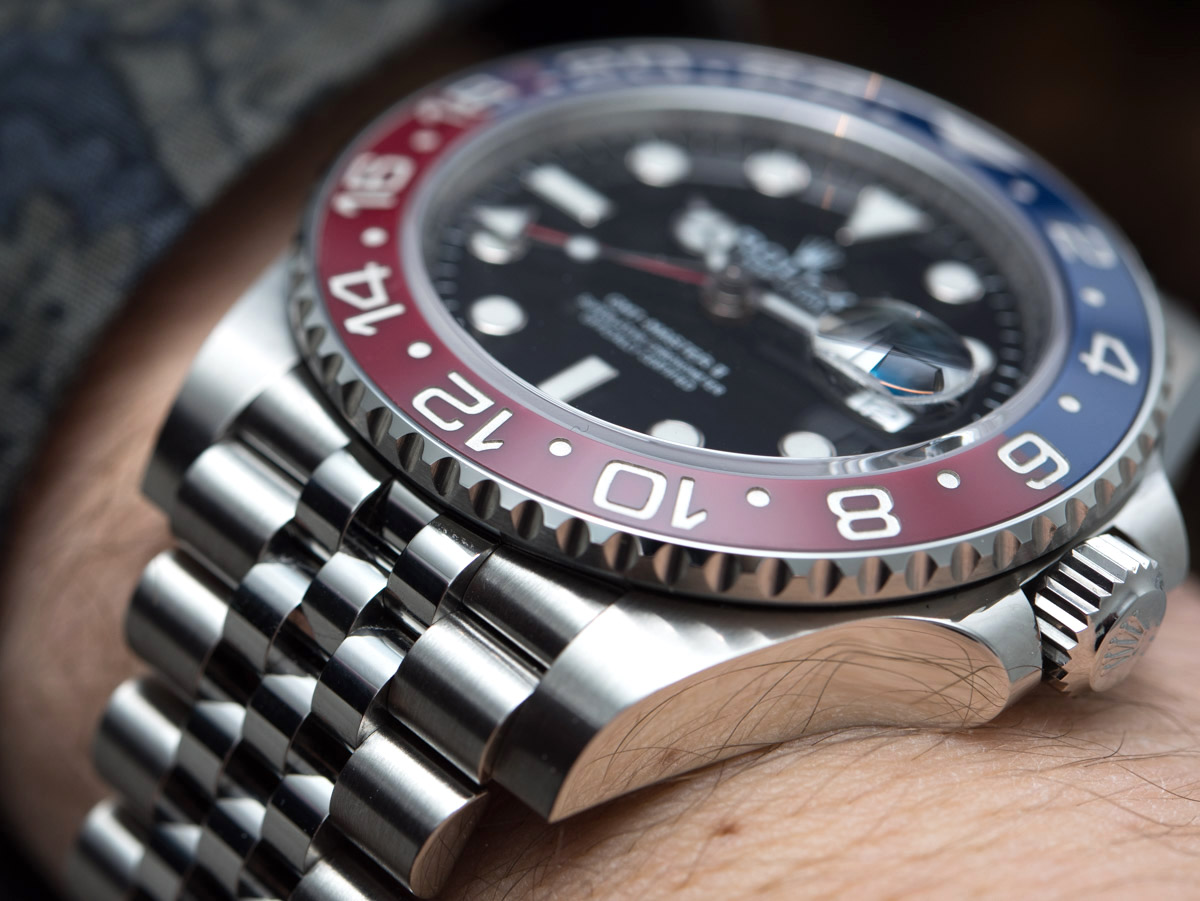
Anyone who doesn’t have a Rolex GMT-Master II watch in their collection might find that now is the time to start thinking about one with the introduction of the caliber 3285 automatic and this new generation of 126710 models. The 126710BLRO is the crowd-pleaser Rolex for 2018 because the brand knows its fans have been patiently waiting for a new “Pepsi bezel” in steel for quite a while. Use of the jubilee bracelet fits in with the brand’s product heritage and more importantly – doesn’t create confusion as to whether the watch is in 18k white gold or steel if you are viewing it as a casual observer. The 18k white gold model will (for now) remain the only red and blue bezel GMT-Master II with the three-link Oyster bracelet, while the steel model will come paired with the jubilee bracelet. Rolex isn’t messing around with this either – intentionally designing the all-steel jubilee bracelet to only fit this particular Rolex model.
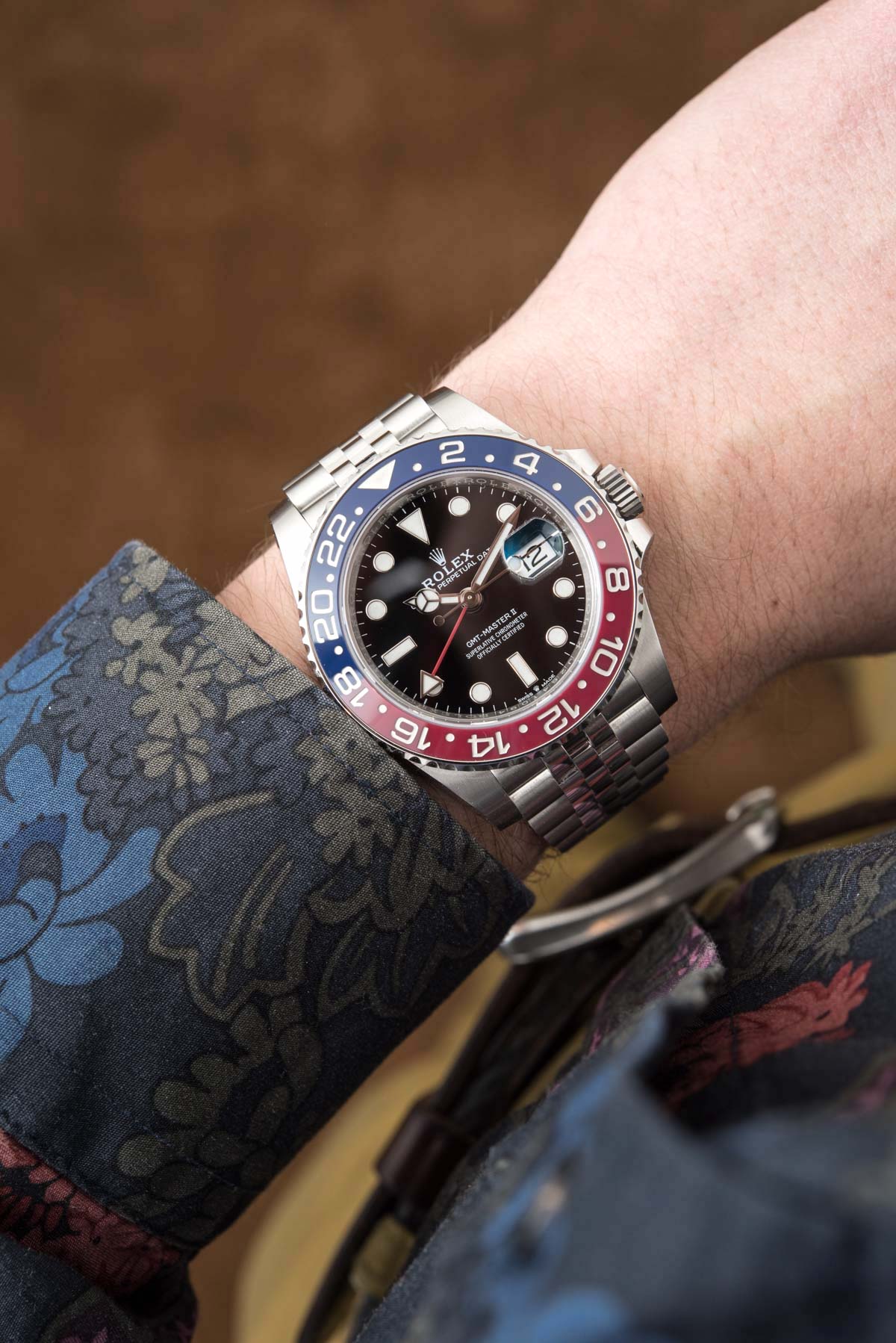
The 40mm size (water-resistant to 100m) feels great on the wrist and the case itself continues to feel slim, yet masculine while being worn. Rolex’s three-link or jubilee bracelets work really well on a host of watches, so it isn’t surprising that once again pairing a GMT-Master II with a jubilee bracelet seems to make sense. Certain to be popular for years to come, the new for 2018 Rolex GMT-Master II 126710BLRO (126710) has a retail price of 8,800 CHF. rolex.com

